 |
The News Service | |||
Profiles | ||||
|
Seven new faculty will join life sciences departments this fall
Thomas Roberts in biology (ecology and evolutionary biology);
Molly Przeworski in medical science (ecology and evolutionary biology);
Richard Freiman in medical science (molecular biology, cell biology and biochemistry);
Thais Salazar-Mather in medical science (molecular microbiology and immunology);
Mayank Mehta in neuroscience; and
Luiz Pessoa and
Teige Sheehan in psychology. 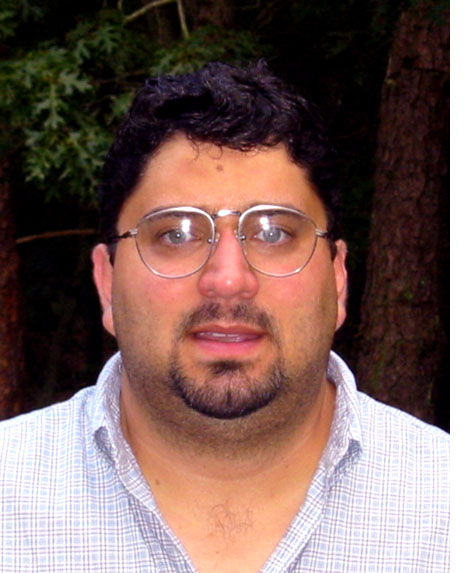
Richard Freiman In the last 50 years, one of the most powerful medical secrets unleashed by biologists is that most diseases have their origins in our genes. Richard Freiman studies the basic mechanisms of gene expression involved in reproduction and fertility in mice. His goal is to better understand the molecular machinery that helps cells express the correct set of genes and that is often altered in disease. “Our work in gene regulation pertains to different diseases, such as ovarian cancer, or conditions such as infertility,” Freiman said. “With a better understanding of the underlying molecular biology of a process, such as reproduction, we can more readily combat many health problems existing in the world today.” Freiman earned a doctorate in genetics at the State University of New York–Stony Brook and Cold Spring Harbor Laboratory. Supported primarily by the National Institutes of Health, he studied the “clever ways” that viruses overtake cells, including how the invaders use a cell’s own machinery to kill it and spread through the body. As a postdoctoral research fellow at the University of California–Berkeley, funded by the Howard Hughes Medical Institute and a Leukemia Society fellowship, Freiman continued the theme of understanding cellular machinery and disease. He knows that with biochemical insights in hand, researchers can think systematically about vaccines and other treatments. Freiman looks forward to “collaborating with the large number of reproductive biologists in Bio-Med departments and in the hospitals” of Brown Medical School. At Brown, Freiman fills a void in the area of chromatin and transcriptional control left by the departure of Kenneth Zaret several years ago, said Susan Gerbi, chair of the Department of Molecular Biology, Cell Biology and Biochemistry. Freiman “will apply a very strong background in molecular biology of transcriptional control to understand a fundamental question of developmental biology, namely regulation of tissue-specific gene expression. His choice of the reproductive system of mouse will interface very well with Brown hospital-based faculty studying reproduction, and he will augment the area of vertebrate developmental biology – an area in which he will teach. We are delighted that Rich will be joining the MCB Department.” 
Mayank Mehta Mayank Mehta is interested in understanding how the mind emerges from the brain. In particular, he studies the relationship between changes in connections between neurons and learning. He combines theoretical and experimental techniques, including a state-of-the art process to monitor the activity of a large number of neurons. “One of the critical functions of the brain is to anticipate,” Mehta said. “Anticipation is critical in almost every walk of life, from walking to reading. It is especially important when you are trying to find your way.” Researchers know that one of the brain regions responsible for navigation is the hippocampus. Mehta records the activity of neurons in the hippocampus in experiments involving navigation. His work shows that with experience, neurons in the hippocampus do become anticipatory. Mehta earned a doctoral degree in physics at the Indian Institute of Science. From there he moved to neuroscience. Mehta carried out postdoctoral training at several places, but most of his work was done at MIT. His most recent research has focused on brain rhythms. “It is well known that neurons fire at various rhythms depending on the rat’s behavior,” he said. “However, the role of these rhythms in information processing and learning has been unclear. Our work shows that such rhythms are critical for learning, in particular for anticipatory learning such as navigation.” At Brown, Mehta will add to a multidisciplinary group of computational and theoretical brain scientists, trying to understand how the brain achieves higher functions. His background in physics and computational neuroscience complements this group, said John Donoghue, chair of the Department of Neuroscience and executive director of the Brain Science Program. “Mayank Mehta is not only a brain theorist, but has a strong experimental program. His research using cutting edge multineuron recording methods expands Brown’s role as a leader in this new methodology, which is used to explore how brain cells work together to compute through their many, complex interactions.” 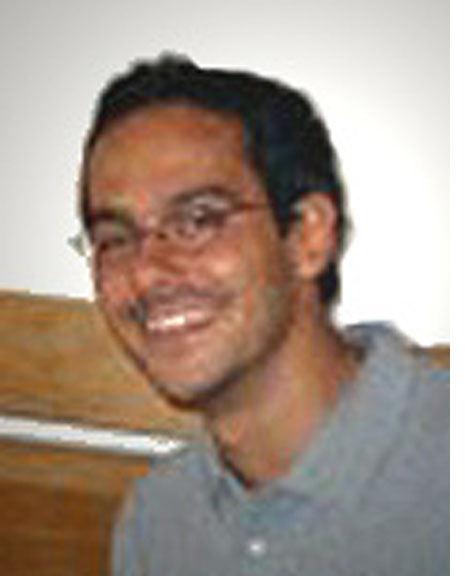
Luiz Pessoa Luiz Pessoa’s research interests criss-cross nearly a half-dozen disciplines, and he may end up collaborating with as many. He received his early training is in computer science, his doctoral training in cognitive and neural systems, and he is applying for a grant to work with a Brown psychiatry professor. “One of the attractions [of Brown] for me was the brain science program that puts all of these people together,” said Pessoa, who has been a visiting fellow at the Laboratory of Brain and Cognition at the National Institute of Mental Health since 1999. Perhaps not surprisingly, Pessoa looks at the interaction between two brain systems largely considered to function separately: the cognitive and emotional systems. His recent research used functional magnetic resonance imaging to take brain images of participants viewing human faces and answering questions that directed their focus either to the faces or to something on the periphery of the image. The findings from that study contradicted previous suggestions that human processing of visual emotional stimuli is automatic and independent of a person’s will, attention and focus of attention. Pessoa’s latest grant application seeks to pursue differences between people who are depressed and those who are not in regards to where they focus attention. It is known that depressed individuals have a bias toward negative information and a better memory for unpleasant as opposed to pleasant events. Pessoa wants to determine whether depressed individuals also have a bias toward negative versus positive cues in an image and whether is it more difficult for depressed individuals to shift attention to another piece of visual information. Pessoa received his bachelor’s and master’s degrees in computer science at the Federal University of Rio de Janeiro in his native country of Brazil and his doctorate at Boston University in 1996. He accepted his first faculty position at his alma mater in the Department of Computer and Systems Engineering and received the “Young Researcher Award” in 1997. – Kristen Cole 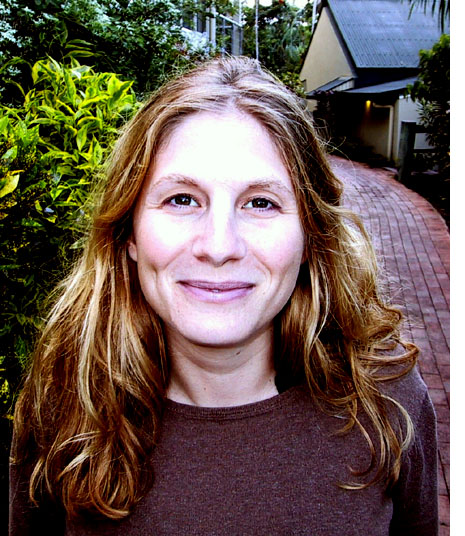
Molly Przeworski Molly Przeworski, an evolutionary anthropologist, uses computational methods to study how natural selection and other evolutionary forces shape patterns of genomic variation in natural populations. In particular, she is interested in using genetic variation within humans to identify regions of the genome involved in the evolution of human-specific traits, such as finding the genes that have brought about linguistic and cognitive abilities. “Patterns of genetic variation across extant individuals are shaped by the evolutionary history of the species, including whether the population size changed, the extent of population subdivision and genetic adaptations,” she said. “Thus, one can use samples from natural populations to learn about past events.” In addition, better understanding of what determines human patterns of genetic variation will help guide the search for disease-susceptibility sites along the genome, said Przeworski. Przeworski will join the Department of Ecology and Evolutionary Biology in January 2004. She earned an undergraduate degree in mathematics at Princeton. Her doctorate in molecular population genetics is from the University of Chicago. Przeworski has held two postdoctoral positions, one in the Department of Statistics at Oxford University and the other in the Institute for Evolutionary Anthropology at the Max Plank Institute in Leipzig, Germany, where she is currently working. “Her early work focused on the fruit fly, Drosophila, but more recently she has turned her attention to human populations,” said David Rand, associate professor of biology. “By comparing DNA sequences from chimpanzees and other apes to patterns of DNA mutations in different human populations, she can identify the history of natural selection on specific genes. She has recently characterized a selective event in a human gene known to play a role in the development of spoken language.” Przeworski will be the first of several new faculty positions at Brown in the rapidly advancing fields of Computational Molecular Biology and Genomics, Rand said. 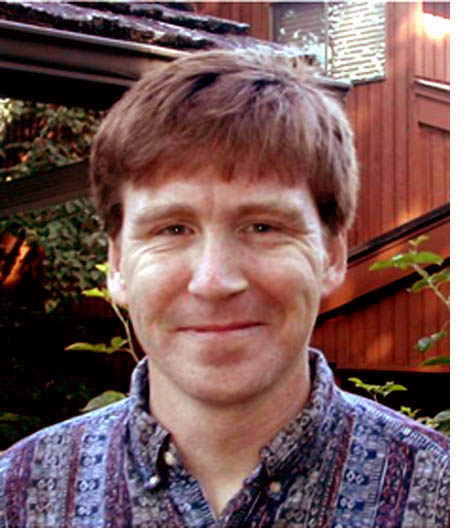
Thomas Roberts Thomas Roberts wants to know how bullfrogs jump as far as they do. Such insight, he says, could tell us something about how muscles power acceleration in human athletes. In particular, he studies how stored elastic energy put into a leg muscle is used to power movements that require acceleration. The better the use of that energy, the more powerful and efficient a frog leaps or an athlete sprints, he says. “Most researchers study steady-speed running, but I am interested in power and rapid acceleration, which is what much of the musculoskeletal system is designed for,” he said. Roberts is funded by the National Institutes of Health. Roberts earned a doctorate at Harvard, where he studied the form, gait and muscle mechanics of runners who use energy and movements economically. He began studying frog jumping as a postdoctoral fellow at Northeastern University. Since 1998, he has conducted research and taught at Oregon State University (OSU). He will continue his work at OSU for a year. When Roberts arrives at Brown for the fall semester of 2004, he will continue research into the muscular mechanisms of running and acceleration. Roberts will also teach human morphology, particularly an anatomy class for medical students. He will be based in the Department of Ecology and Evolutionary Biology (EEB), where three other faculty members also investigate locomotion in vertebrate species. “Tom is one of the most exciting younger vertebrate morphologists studying the biomechanics of vertebrate locomotion,” said EEB Chair Mark Bertness. “He complements our already strong vertebrate locomotion group [of Ted Goslow, Sharon Swartz, Stephen Gatesy and Christine Janis]. It is one of the best vertebrate-morphology groups in the country.” 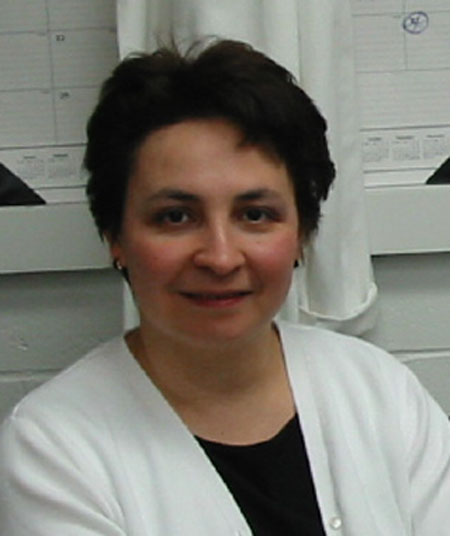
Thais Salazar-Mather To study how viruses cause illness, researchers must know how the body responds to infection. Thais Salazar-Mather was trained as a molecular virologist before coming to Brown as a post-doctoral researcher almost 10 years ago. She came to learn immunology. “This was the best place to be to study the mechanism of infection in the body, and Christine Biron (department chair and professor) had the best lab in the country to study viral immunology.” Salazar-Mather conducted research into which proteins tell cells where to go in the body to fight viral invaders. In time, she became an assistant professor of research. According to Biron, Salazar-Mather “did fantastic work.” Today, Salazar-Mather is highly respected in the field of early virus-induced cellular immune functions, Biron said, earning the title of assistant professor of molecular microbiology and immunology. Clearly, funding agencies recognize Salazar-Mather. She is supported by three competitive NIH grants. One of these is a career development award that funds her research into the function of what are called “natural killer” cells. Salazar-Mather “developed a unique expertise in mechanisms controlling cellular trafficking for defense against infections,” said Biron. “An author of several publications in leading journals of her fields, her work has significantly advanced the understanding of how natural killer cells of the innate immune system are regulated and function in tissues. We are lucky to have her. She is terrific.” As an assistant professor, Salazar-Mather moved into her own lab Sept. 1. 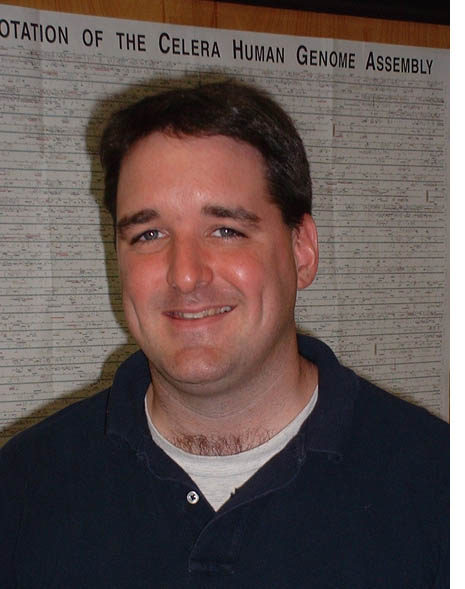
Teige Sheehan Teige Sheehan researches neurobiological mechanisms to explain how hormones induce maternal behavior. In the animal kingdom, there is an obvious influence: Female rats are scared of all pups – baby rats – before they give birth to their own litters. Looking for biological answers to parental behavior in other species may one day lead to information that could benefit humans. Sheehan began pursuing this line of basic science – examining molecular changes that occur in the brain as a result of hormones – as an undergraduate and continued as a graduate student in the Department of Psychology at Boston College. Working with Michael Numan, professor of psychology, he studied the lateral septum, an area of the forebrain that appears to be involved in emotional and motivational behaviors. For his undergraduate senior thesis, he was named Scholar of the College. Sheehan’s graduate thesis described “an investigation into the neural and hormonal inhibition of maternal behavior in rats” and earned him his doctorate in 2000. Before coming to Brown, Sheehan did postdoctoral research on the neurobiology of depression at the Yale School of Medicine Department of Psychiatry. During that time, he presented research about how the lateral septum is altered by stress and mediates behavioral manifestations of depression. As a faculty member at Brown, he hopes to be able to pursue both lines of questioning into maternal behavior and depression toward answers that hold obvious implications for women who suffer post-partum depression. Sheehan will not teach this year, but he eventually hopes to lead a course on hormones and behavior and a seminar on cell signaling in the nervous system. – Kristen Cole ###### News Service Home | Top of File | e-Subscribe | Brown Home Page | ||||